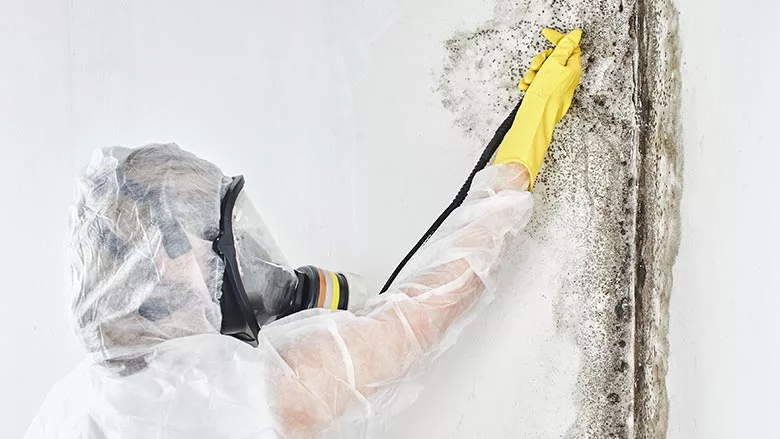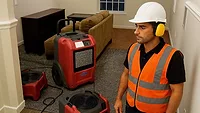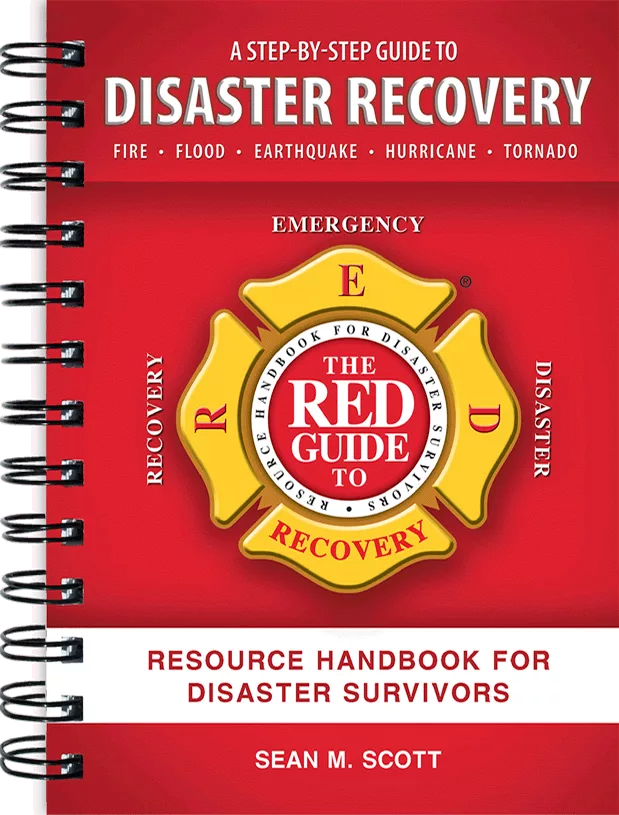Preserving a Site When the Job's on Hold
The volatile economy and downturn in new construction have forced many building owners and developers to put their building projects on “pause.” But halting construction can be an extremely risky business decision.

The volatile economy and downturn in new construction have forced many building owners and developers to put their building projects on “pause.” But halting construction can be an extremely risky business decision.
Whether it’s an office, hospital, manufacturing facility, government building, hotel, or condominium, an unfinished structure is often unprotected from temperature extremes, high humidity, and a host of other ambient conditions that can damage or warp materials, and cause mold growth. The structure is especially at risk if the facility’s mechanical system is not yet operable.
To protect buildings in “pause mode,” owners and facility managers should consider the use of desiccant dehumidification to control the indoor environment. The goal: Preserve the interior including building materials and contents to protect against damage and corrosion caused by too little or too much humidity, control heat/cold temperatures and prevent mold growth.
Temporary climate control for a building under construction is an efficient and cost-effective process. It’s an extremely wise investment – the cost for not protecting a building is potentially far more expensive if remediation is necessary from damage caused by weather.
Many owners opt to enlist desiccant dehumidifiers, ideal because of their effectiveness to create low relative humidity and dew point temperatures at any temperature. They also often eliminate the need for heat, saving a considerable amount of energy.
Unlike cooling-based dehumidifiers, which cool the air to condense moisture and then draw it away, desiccants attract moisture molecules directly from the air and release them into an exhaust air stream.
Desiccants can attract and hold from 10 to more than 10,000 percent of their dry weight in water vapor. Portable desiccant dehumidification units are designed to provide the aggressive drying required to establish proper humidity tolerances.
The units are built to handle the rugged construction environment and can be operated by electrical power, if available, via temporary generator power, or by a natural gas line or propane gas supply.
Portable, inflatable plastic ducts are used as part of the airflow system, precluding any reliance upon the building’s permanent HVAC system. Also, temporary ducts are easy to move and often placed in sensitive areas.
Aside from maintaining a dry environment, these units will prevent mold growth by reducing humidity levels. This is a critical benefit: Many insurance companies restrict their coverage to construction contractors due to the effects of mold, mildew and water related damage during construction.
Once the decision is made to utilize desiccant dehumidification in a construction “pause” project, it’s time to prepare the building. There are many factors to consider.
First, it’s important to recognize that controlling the climate in a “pause” project usually is a unique process based on the structure itself. Parameters include the size of the building, number of floors, existing and targeted temperatures and humidity levels, dehumidifier capacities, building materials, and configurations of the structure, including openings and air flow. Preparation can take a few hours to a few days.
In some cases, heating and cooling systems are utilized in conjunction with desiccant dehumidification, depending on the weather conditions in that region of the country.
A building owner or manager must then consider stabilization of the structure, air exchange rates, make-up air amounts, and control point settings.
The reality of most building sites is that the building envelope is incomplete or in some cases not all areas within the structure are moisture sensitive. For a building to be effectively controlled, the use of temporary walls and containments is necessary to ensure that dry air from dehumidifiers is contained.
Construction firms also should consider the necessary air exchange rates. Air exchange parameters for buildings under construction are dependent upon the size and conditions of the building air and temperature requirements. These rates can range from 1/2 to more than 2-air changes per hour. Typical requirements are 1/2 an air-change in a given space.
Deciding on the air exchange rate is best determined by calculating a moisture load on the structure. The number and placement of dehumidification and heating or cooling equipment is then determined by analyzing this moisture load.
A common question for many is whether the “pause” building requires make-up air if it isn’t occupied, according to ASHRAE Standard 62. Essentially, the answer is no.
The purpose of this standard, as defined in Section 1, is to "specify minimum ventilation rates and indoor air quality that will be acceptable to human occupants and are intended to minimize the potential for adverse health effects." When a building is being protected, however, it either has a limited occupancy or is not occupied at all, and little or no make-up air is required.
Setting control points is another important factor in building preservations. These guidelines ensure that two major problems are avoided - corrosion and mold. Generally, humidity levels should be maintained below 50%, and ideally between 30 and 50%. Mold growth is controlled with humidity levels below 50%. That’s why monitoring levels on an ongoing basis is strongly recommended.
Remote monitoring with alarm notification is an ideal method to verify that indoor conditions are maintained and personnel can respond quickly, if necessary, to a loss of conditions. It also alerts the team when an unforeseen event such as a storm, vandalism, and pipe break takes a building out of specification.
The system records climate control conditions on an onboard memory chip and transmits those conditions to a secure Web site hourly. Alert messages are completely customizable, allowing the user to choose whether alert messages are delivered via text message, email or to Web sites.
In addition to remote monitoring, it’s critical to conduct site visits periodically to ensure equipment is running correctly and to inspect the facility. This hands-on approach further confirms the building is safe from the elements.
Until the economy rebounds, a number of construction projects across the country will be placed on hold. Temporary dehumidification is an essential ally to help construction firms, building developers and others preserve these structures until construction can proceed once again.
Looking for a reprint of this article?
From high-res PDFs to custom plaques, order your copy today!





